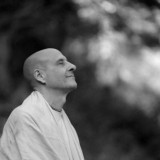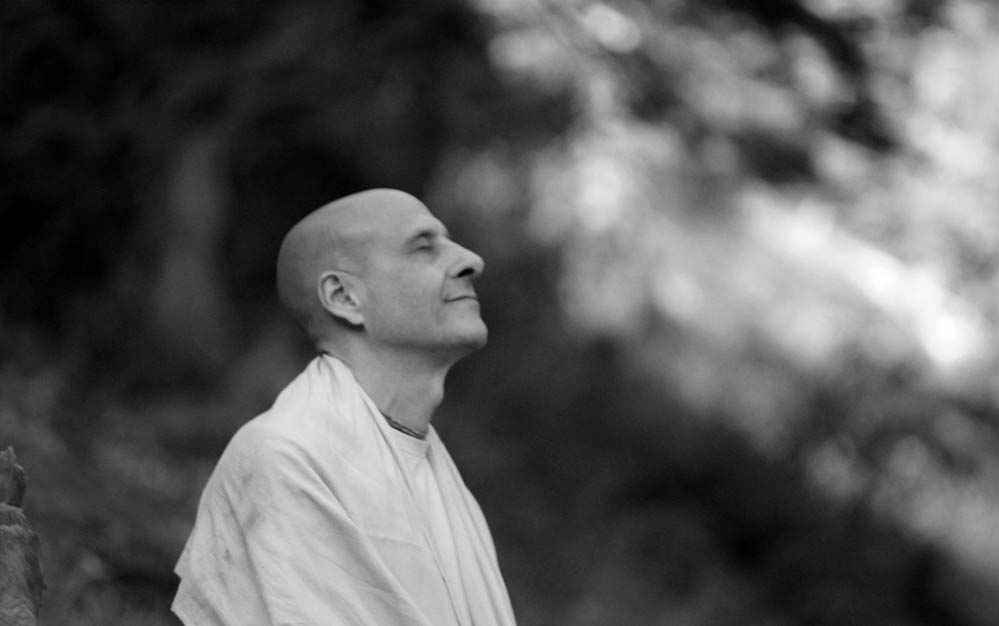After more than a year of wandering in the forests of Himalayas, meditating in caves and meeting with mystic yogis and gurus and an unimaginable reunion with a dear old friend Radhanath swami set out on a journey to Amarnath. As their train moved out of the flooded paddy fields after two days of getting stuck, they got down at Mathura just to breathe some fresh air and stretch a bit. With unsuccessful attempts of getting back into the train they decided to spend the rest of the day in Mathura. And it was Janamashtami! The appearance day of Lord Sri Krishna! While deciding to meet his friend at the brhama ghat in Radhanath swami set out on a lone journey to Vrindavan.
The following is an excerpt from his book ‘The Journey Home’ where he describes his first day in vrindavan, which unknown to him at that point of time, was the beginning of all the vrindavan yatras that devotees from all the corners of the India and beyond attend and which also highlights Radhanath Swami’s fondness of the place and his love for it.
“When we arrived in the town of vrindavan, I asked him (the bus driver) where the river was, and he pointed the way.
A few steps later a farmer stood blocking my path, his palms pressed together in supplication. Gleefully, he exclaimed, “Welcome to vrindavan. Whoever comes here is Lord Krishna’s special guest.” Clasping my hands he effused, “I am a vrajabasi, a resident of vrindavan. It is my duty to make you happy. Let me arrange food and accommodation for you.”
“Thank you very much, but I’ll be happy to sleep on the bank of the river and beg for food.”, I said.
Casting his head down, he grew desperate. “Please accept my humble service. If you do not, how can I show myself before my Krishna?”
His humility was too difficult to deny. I instantly loved this vrajbasi, feeling him to be a family member welcoming me home. He arranged my stay at the ashram of an old blind swami and departed.
That afternoon I left behind the crowded ashram to roam into one of the lush forests of vrindavan. As I walked, I pressed my feet into the soft, fine sands, strolling among ancient trees whose trunks swirled upwards, each cloaked with white, orange and yellow flowers and shining green leaves. A sweet lowing attracted my eyes to a herd of white cows grazing on the shrubs. With white glistening eyes, they gazed at me as if they had always known me. Strangely, I felt the same for them, I walked on. A startling protracted caw rang out, and I turned to see a peacock, the plumes of his brilliant tail fanned out and his iridescent neck, moving gracefully back and forth. Next, a deep resonant ‘mmm…’ drew me to a huge white bull that loped along the pathway chewing lazily on the scattered shrubs. Looking up into the trees, I saw a flock of bright green parrots with orange beaks and bright red eyes. They chattered to one another, took note of me and then soared off into the sky. Monkeys with brown fur, pink faces and green eyes swung from branch to branch like mischievous children, all the while screaming, “cheee cheee”. Through the treetops, I could hear rumbling of monsoon clouds. Perfume by blossoming flowers, the breeze carried a cool mist that caressed my skin.
But of all the lovely sights and sounds, it was the song of devotees chanting hymns that most lifted my heart. Small girls balanced clay water pots o their heads as they sang “Radhey Radhey”, and danced down the sandy pathway lined with forest, shrines, ashrams and thatched houses. I followed the children until we reached a clearing. There, I beheld the river Yamuna, winding with a gentle majesty through the forest.
Wooden row boats piled along, transporting ladies dressed in colorful saris, men with white turbans casually wrapped around their heads and talkative children whose skinny, restless legs splashed in the water. Lining the river bank were medieval domes of intricately carved red stones under which vrajbasis gathered for shelter from the sun and rain, all the while chanting Krishna’s names. As temple bells resounded in the distance, my heart swelled with surprise and gratitude. After more than a year of wandering I felt that I had finally found home again.
I saw a sadhu sitting in the hollow of a tree near the river bank whom, I was told, was a110 years old. He wore only a burlap loincloth and his matted hair wrapped his head like a crown. His aged face drooped with folds of skin and he had to lift his heavy eyelids with his fingers in order to see. With a stroke of the hand, he beckoned me. I soon discovered that he was a mauni baba, one who has taken a vow never to speak, and his only means of communication was a piece of broken slate and a clump of chalk. As I squatted down beside him, he scratched two large words on the ten inch slate: “People think.” Then he erased the words with his bare fingers and continued writing, “that the people,” he erased again and wrote, “of vrindavan” –erase- “are crazy,” –erase-. “it is true” –erase-. “we are crazy” –erase-. Then he wrote in big letters, “FOR KRISHNA.” This too he erased, then wrote, again in sections, “if you stay here you will become crazy, too.” Then he smiled, as if he knew something I didn’t…
– Radhanath Swami


